Spring is coming and with it the anticipation of the 2024 FPV season. Many people are freshening up their quads, assembling new ones or starting the hobby from scratch. But as soon as it comes to the heart of an FPV drone, i.e. the video transmission system and the associated goggles, things can get confusing, especially for newcomers to the hobby. That's why we've tested all the video systems currently available! We take a look at which goggles come with which features, what the image in the goggles looks like and how far you can get with the various video transmitters until it starts to get critical or you no longer have the confidence to fly effortlessly.
Below you will find image examples and information on the individual video systems, which we also show in our video. The screenshots and flight recordings are all taken directly in the goggles. They therefore show exactly what the pilot sees when flying.
(However, the images in this blog post may differ slightly due to compression)
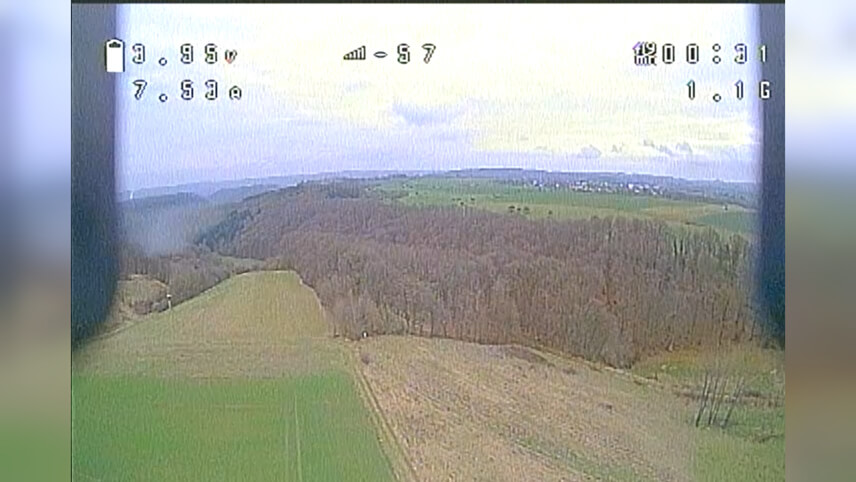
An analog video system is probably the most unsightly of all video systems in terms of picture quality. With a maximum of 480p, you really don't get much out of it, but there are other plus points. Especially for beginners or pilots with a limited budget, the analog video system offers the best value for money. Goggles are available from 80-600 euros, VTx, camera and antenna from 65 euros. Analog also scores points with its low latency (<= 19 ms), which is why it is still frequently used by FPV racers. However, the range and penetration within buildings is not as good as with other digital systems, whereby a connection failure can be easily assessed, as the image does not abruptly break off but slowly transitions from slight color and pixel interference to complete image loss.
Popular products in our store:
SpeedyBee TX800 VTX
TBS Unify Pro V3
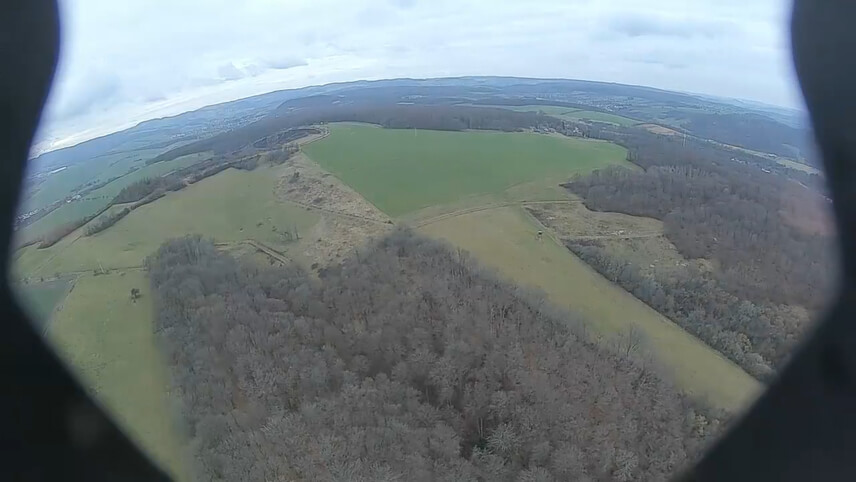
Whether Caddx Vista, RunCam Link or the first DJI Air Unit, compared to analog, even the veterans of digital FPV transmitters have a clear picture. With 720p and up to 120 frames per second, these VTx have converted many analog pilots to digital FPV. These transmitters can be operated with quads from 2-6S and are available from around 190 euros.
However, you also need suitable DJI goggles for this system, which are available new from 470 euros. In terms of image quality, you should notice that analog definitely can't keep up here. However, the image quality has to be paid for with a higher latency (30-42ms) and due to the weight of the Air-Units, they are only suitable for 3 inch copters upwards.
Popular products in our store:
Caddx Vista Nebula Pro
Caddx Polar
Caddx Nebula Pro Nano

according to the manufacturer, it takes an average of 14 ms for the image from the cam to be displayed on the glasses. A test by Chris Rosser shows that values of around 30 ms should be expected before a new frame is displayed in the glasses. According to the manufacturer, HDZero is therefore even faster than analog, even though it is a digital system. The behavior in the event of an impending signal dropout is also very similar to the analog system. The colorful confetti also makes it easy to estimate if and when the signal will drop out. Nevertheless, the picture with a resolution of up to 1080p at 30fps is better than that of a Caddx Vista. HDZero also offers three different VTxs. These include a Whoop VTx that weighs less than 5 grams and can even be operated on 1S.
Popular products in our store:
HDZero Freestyle V2 Kit
All HDZero products
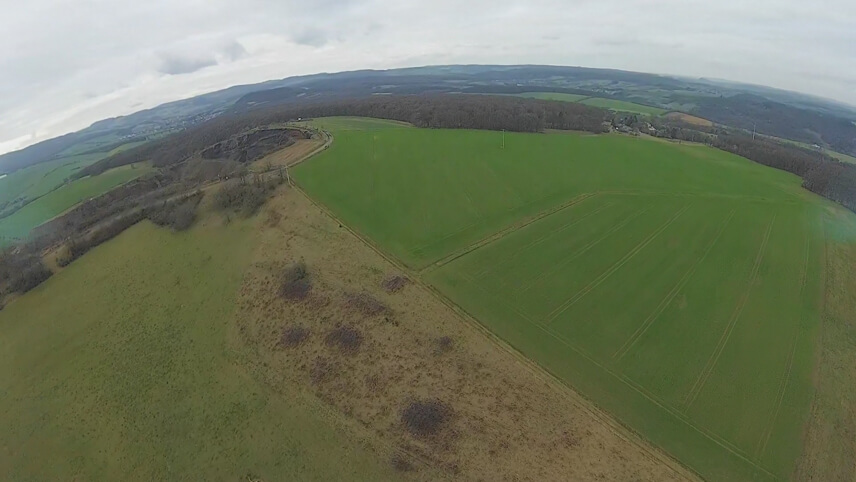
VTx for Whoops or 1S operation are not only available from HDZero. With its own Walksnail video system, Caddx now also has a transmitter that is designed for low voltages and even has a resolution of up to 1080p. Walksnail also offers transmitters up to 6S. We flew the HD kit with the new Goggles X, which is definitely above HDZero and the first generation of the DJI Digital System in terms of image quality. 1080p and up to 120fps ensure a sharp and smooth image in the goggles, although this comes at the cost of higher latency than the DJI system. Depending on the setting, this is between 30 and 60 ms.
Popular products in our store:
Walksnail Goggles X
Walksnail Avatar Kit V2
Walksnail Avatar VRX Module
All Walksnail products
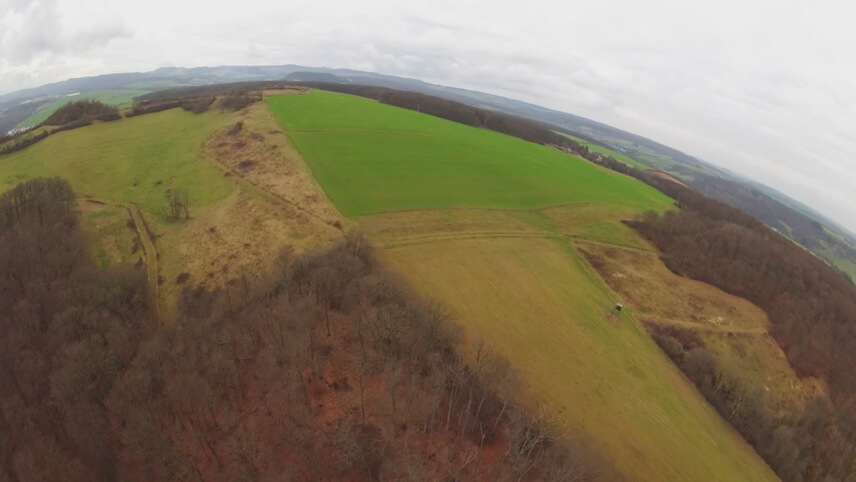
Caddx recently launched a VTx on the market that is in direct competition with the DJI O3 Air Unit. In addition to transmission into the goggles at up to 1080p and 100fps, the Moonlight also stores footage up to 4K 60fps internally on a MicroSD card, which means that there is no need to use a Gopro. The image in the goggles is impressively sharp, especially at close range, but appears somewhat blurrier in the distance than the DVR of an O3 AirUnit.
Popular products in our store:
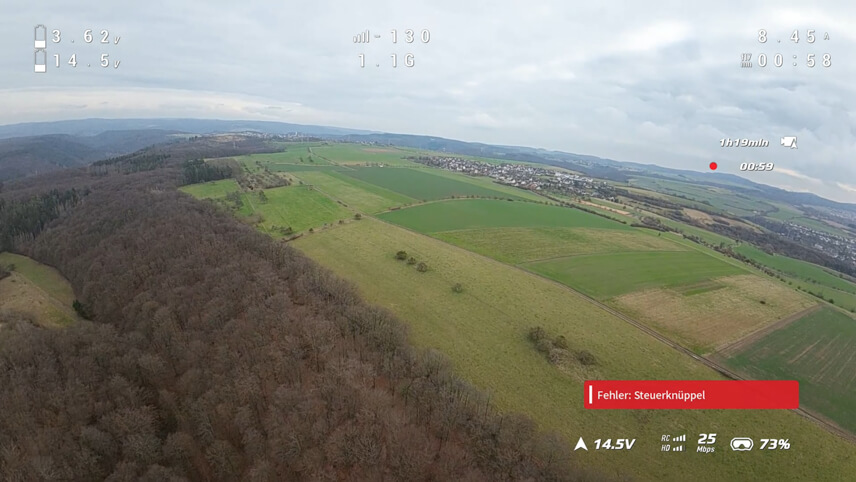
Where the onboard recording of the Moonlight ends, the O3 Air Unit begins. Because with this you can even record 4K at 120fps on the SD card. The image is transmitted to the goggles at up to 1080p 100fps, but appears slightly more blurred than with the Moonlight during fast flyovers, which makes it more impressive in the distance. The O3 is the first choice for cinematic shots, but if you also like to fly faster freestyle and want to see the approaching bush, branch or tree better in the goggles, you should opt for the Moonlight.
Popular products in our store:
As with so many things in life, the ranking of systems also depends on your own preferences and budget. Therefore, this conclusion should be understood as my personal opinion and should only serve as a recommendation.
Do you do nothing but race and your copters suffer from a chronic concrete allergy? Then you're in good hands with HDZero and Analog, as these systems impress with their low latency.
Which system you choose depends on your budget. If you have the necessary change, go for HDZero! The glasses have great displays and can also be supplemented with additional VRx and analog modules via HDMI and analog-in. If you want to spend as little as possible, go for analog! Here you can get goggles, VTx, cam and antenna for less than 150 euros to get started right away.
For those who like to chase their quad through the concrete jungle, but don't want to do without a good-looking image, I would recommend the Walksnail system with the Goggles X. With both the Moonlight and the HD-VTx you have a top image and good hardware. If you want to record footage without strapping a GoPro to the copter, the Moonlight is also the right choice for recording up to 4K footage without an extra cam. In addition, unlike DJI, Walksnail also offers VTx for Whoops, which makes the system all the more interesting for me.
If you occasionally fly freestyle but attach more importance to the footage and prefer to film things with your copter instead of chasing it through bandos, the DJI system is the first choice for you. In contrast to Walksnail, the selection of VTx is more limited, but sufficient. In addition, you can also connect and fly many a photo drone with the Goggles 2, for example, and of course you can also fly freestyle with an O3 if it doesn't hurt you when 250 euros crash into something.
In the end, the choice between DJI and Walksnail comes down to your personal preference as to which image you like better. The best way to make this decision is to watch the video accompanying this blog post!